Articles
- Page Path
- HOME > J Powder Mater > Volume 29(5); 2022 > Article
-
Article
Methyltrichlorosilane 표면 처리를 통한 적층 제조용 AlSi10Mg 분말의 유동 특성 향상 공정 연구 - 박상철a,b,†, 김인영a,c,†, 김영일a, 김대겸a,*, 이기안b, 오승주c, 이빈a,d,*
- Improving Flow Property of AlSi10Mg Powder for Additive Manufacturing via Surface Treatment using Methyltrichlorosilane
- Sang Cheol Parka,b,†, In Yeong Kima,c,†, Young Il Kima, Dae-Kyeom Kima,*, Kee-Ahn Leeb, Soong Ju Ohc, Bin Leea,d,*
-
Journal of Korean Powder Metallurgy Institute 2022;29(5):363-369.
DOI: https://doi.org/10.4150/KPMI.2022.29.5.363
Published online: September 30, 2022
a 한국생산기술연구원 한국희소금속산업기술센터
b 인하대학교 신소재공학과
c 고려대학교 신소재공학과
d 과학기술연합대학원대학교 융합제조시스템공학과
a Korea Institute for Rare Metals, Korea Institute of Industrial Technology, Incheon 21655, Republic of Korea
b Department of Materials Science and Engineering, Inha University, Incheon 22212, Republic of Korea
c Department of Materials Science and Engineering, Korea University, Seoul 02841, Republic of Korea
d Convergence Manufacturing System Engineering, University of Science & Technology, Daejeon 22792, Republic of Korea
-
* Corresponding Authors: Bin Lee, TEL: +82-32-458-5114, FAX: +82-32-458-5120, E-mail: lbin@kitech.re.kr
Dae-Kyeom Kim, TEL: +82-32-458-5114, FAX: +82-32-458-5120, E-mail: kyeom@kitech.re.kr -
†These authors contributed equally to this work.
- 박상철·김인영: 학생, 김영일·김대겸: 연구원, 오승주·이기안: 교수, 이 빈: 수석연구원
© The Korean Powder Metallurgy Institute. All rights reserved.
- 742 Views
- 2 Download
- 1 Crossref
Abstract
- AlSi10Mg alloys are being actively studied through additive manufacturing for application in the automobile and aerospace industries because of their excellent mechanical properties. To obtain a consistently high quality product through additive manufacturing, studying the flowability and spreadability of the metal powder is necessary. AlSi10Mg powder easily forms an oxide film on the powder surface and has hydrophilic properties, making it vulnerable to moisture. Therefore, in this study, AlSi10Mg powder was hydrophobically modified through silane surface treatment to improve the flowability and spreadability by reducing the effects of moisture. The improved flowability according to the number of silane surface treatments was confirmed using a Carney flowmeter. In addition, to confirm the effects of improved spreadability, the powder prior to surface treatment and that subjected to surface treatment four times were measured and compared using s self-designed recoating tester. The results of this study confirmed the improved flowability and spreadability based on the modified metal powder from hydrophilic to hydrophobic for obtaining a highquality additive manufacturing product.
- 알루미늄 합금은 다른 금속에 비하여 상대적으로 가벼 운 무게, 우수한 기계적 성질을 가진다[1]. 따라서 내마모 성, 내식성, 고온 마모 저항성, 비강도의 이점으로 자동차 실린더, 자동차 엔진, 항공기 부품 및 외피에 사용된다[2]. 알루미늄 합금의 이러한 특징으로 인해 기존의 제조 방식 을 넘어 적층 제조(Additive manufacturing, AM) 공정을 통하여 자동차 및 항공 산업에 적용하기 위하여 활발히 연구되고 있다. 본 연구에서는 AlSi10Mg 합금을 사용하 였으며, 이 합금은 AM 공정에서 가장 일반적으로 사용되 고 있는 Si와 Mg를 소량 첨가하여 기계적 특성을 향상시 킨 알루미늄 합금이다[3-6].
- AM 공정은 3차원 C AD를 이용하여 재료를 층층이 (layer by layer) 쌓아 올려 제조하는 기술이며, 기존의 전 통적인 제조 공법으로는 구현하기 어려운 형상의 제작이 가능하다. AM 공정 중 금속 분말을 재료로 하는 대표적 인 PBF(Powder Bed Fusion) 공정과 DED(Direct Energy Deposition) 공정은 대표적인 AM 공정이며 금속 분말을 재료로 한다. PBF 공정의 경우 DED 공정보다 높은 형상 정밀도를 확보할 수 있어 항공 및 의료 산업에 사용되고 있다[7]. 따라서, 본 연구는 AlSi10Mg 합금 분말을 PBF 공정의 AM 공정에 활용하는 연구를 진행하였다.
- AM 공정을 통하여 일관성 있는 높은 품질의 제조품을 얻으려면 고품질의 금속 분말과 공정 변수의 최적화가 필 요하다. 지금까지의 PBF 공정 연구는 주로 레이저 파워, 스캔 스피드, 레이어 두께 등 적층 제조 공정 변수 관련 연구가 주로 이뤄졌다[8, 9]. 하지만, 분말의 형태, 분포, 수분의 영향과 같은 분말의 특성도 제조품의 품질에 영향 을 준다는 것이 여러 연구를 통해 확인되었다[10, 11].
- PBF 공정이 원활히 작동되려면, 분말이 베드에 쌓이는 recoating 공정이 원활이 이뤄져 충분한 packing density를 얻을 수 있어야 한다. 이처럼 recoating이 원활히 이루어지 는 정도를 퍼짐성(spreadability)이라 정의된다. 흐름성 (flowability)은 중력에 의해 분말이 이동할 수 있는 능력으 로 정의되며, 금속 분말을 사용하는 AM 공정에서 중요한 요소인 유동 특성(Flow property)을 표현하는 방법 중 하 나다[12–15]. 따라서, PBF 공정에서 균일하고 최적화된 물성을 얻기 위해서는 흐름성 및 퍼짐성에 대한 연구가 필요하다. 유동 특성에 영향을 주는 요인으로는 금속 분말 의 크기 및 형상, 입자간 응집력, 수분 등이 있으며, 본 연 구는 수분에 의한 영향에 중점을 두었다[11, 16, 17].
- 보관 상태가 우수하고, 분급, 포장 등의 과정에서 대기 와 노출되지 않은 분말들이 주로 사용되지만, 실제로는 장 기 보관, 분말 재사용 등의 과정에서 분말의 유동 특성이 저하되어 PBF 공정에 활용이 불가능한 경우가 있다. 이를 보완하기 위해, 금속 분말의 유동 특성에 관한 몇몇 연구 가 진행되었으며, S. Touze 등은 알루미늄 분말을 특정 주 파수로 진동을 시키거나 열처리를 통하여 흐름성을 향상 시키는 연구를 하였다[18]. K. Riener 등은 AlSi10Mg 분 말의 보관 조건이 흐름성에 미치는 영향에 관하여 연구를 하였고, 습한 조건에서 보관된 분말을 진공 건조 오븐에서 건조함으로써 표면에 형성된 수분을 제거함으로써 흐름성 을 향상시킬 수 있음을 밝혀냈다[19]. L. Cordova 등은 흐 름성을 측정하기 위하여 자체적으로 장비를 고안하였으며 , Inconel 718, Ti6Al4V, AlSi10Mg, Scalmalloy 4가지 금속 분말을 측정하였다[17]. 수분에 의한 흐름성의 영향을 확 인하기 위하여, 건조 및 가습 처리를 하여 비교하였다. 실 험 결과, AlSi10Mg 분말이 수분에 가장 민감한 것으로 나 타났으며, 가습 처리 후 흐름성이 크게 감소하였다. 즉, 공 기 중 수분이 금속 분말, 특히 알루미늄계 합금 분말의 유 동 특성 저하의 주요한 원인 중 하나라는 것을 확인할 수 있다. 알루미늄계 분말의 다양한 활용에 있어, 공기 중 수 분에 의한 유동 특성의 저하는 극복해야 할 요소 중 하나 이다. L. Jallo 등은 고체연료용 알루미늄 분말을 실란계 (silane) 화합물로 표면 처리 후 유동 특성 향상의 결과를 보였다[20]. 하지만 해당 논문은 응용 분야의 차이로 인해 유동 특성을 분말의 안식각(angle of repose) 측정에 의존 하였다. flowability, Hausner ratio 등 일반적인 PBF 공정 에서의 유동 특성 평가를 수행하지 않았으며, 표면 특성 분석은 이뤄지지 않았다.
- 본 연구팀은 기존 연구에서 실란계 화합물을 이용하여 수소화-탈수소화 타이타늄 분말을 표면 처리하였고, 각 화 합물의 흐름성 향상 및 퍼짐성 향상 효과를 비교하였으며, 분말의 표면을 친수성에서 소수성으로 개질하여 유동 특 성 향상의 결과를 얻었다[21]. 현재까지 적층 제조용 알루 미늄 분말을 표면 처리하여 유동 특성을 향상시킨 연구는 보고된 바 없으며, 알루미늄 합금 분말도 타이타늄 분말과 같이 표면에 쉽게 산화피막(Al2O3)이 형성되어 친수성을 띈다는 점을 이용, 타이타늄 분말에서 적용한 실란계 화합 물 표면 처리를 AlSi10Mg 분말에도 적용하여 PBF 공정 적용을 위한 유동 특성 향상 연구를 진행하였다.
1. 서 론
- 실험에 사용된 분말은 가스 분무법(Gas atomization)으 로 제조된 AlSi10Mg 분말(MKT, Korea)을 사용하였다. 그 림 1은 제조된 AlSi10Mg 분말의 입자 형상과 입도 분포 를 보여준다. 분말의 형상은 구형임을 전자 주사 현미경 (SEM; JSM-7100F, JEOL)을 통하여 확인할 수 있고, 분말 의 입도는 레이저 입도 분석기(PSD; Mastersizer 2000, Malvern Panalytical)로 분석하여 중간값 28.1 μm을 얻었다.
- 실란계 화합물은 methyltrichlorosilane(Sigma-Aldrich, USA)를 사용하였고 용매로는 99% n-heptane(DUKSAN, Korea)을 사용하였다. Methyltrichlorosilane의 분자식은 CH3SiCl3이며, 여기서 할로겐 원소 C l은 알루미늄 표면에 결합한 OH와 반응하여, siloxane(Si-O-Si) 결합을 형성한 다(그림 2 ). CH3은 반응에 참여하지 않으며, 표면 처리된 알루미늄 분말에 소수성 특성을 부여한다[20, 22, 23].
- MTCS 표면 처리는 n-heptane에 0.2M 농도의 methyltri chlorosilane을 PTFE 비커에 혼합하여 실온에서 교반기를 사용하여 300 rpm으로 15분간 교반하였다. 혼합된 용액에 2:1의 질량비로 AlSi10Mg 분말을 넣어 300 rpm으로 30분 간 교반 후, 필터를 통하여 표면 처리된 AlSi10Mg 분말만 을 걸러내어 진공 오븐에 110°C에서 12시간 동안 건조하 였다. 표면 처리는 1회부터 4회까지 진행하였으며, 표면 처리에 의한 AlSi10Mg 분말의 상변형을 비교하기 위하여 X선 회절 분석(XRD; D8 ADVANCE, Bruker)을 진행하였 다. 또한, 표면 처리에 의해 형성된 결합의 형태를 확인하 기 위하여 X선 광전자 분광 분석(XPS; K-Alpha+, Thermo Fisher Scientific)을 하였다. 그림 2 및 식 (1)은 실란계 화합 물 표면 처리 과정과 반응식을 보여준다[21, 24, 25].
- 분말의 흐름성은 Carney flowmeter 측정법을 이용해 측 정하였으며, ASTM B964의 규격에 있는 직경 5mm의 Carney funnel을 사용하여 50g의 분말이 낙하하는 데 걸리 는 시간을 5번 측정 후 평균을 냈다[26]. 분말의 퍼짐성은 본 연구팀에서 고안한 퍼짐성 측정 장치(recoating tester) 로 측정하였다(그림 3). PBF 공정과 유사한 방식으로 recoating blade가 좌우로 왕복운동을 하며 베드에 분말을 쌓고, 동시에 build platform은 설정된 수치만큼 하강한다. 분말은 powder hopper에 채우며 정해진 횟수가 되면, build platform에 쌓인 분말의 무게를 재어 recoating density를 측정한다. 본 실험에서는 recoating blade가 1회 왕복 시 build platform이 0.1 mm 하강하도록 설정하였고, build platform이 총 0.5 mm 하강하였을 때, build platform 위에 있는 분말의 무게를 재어 recoating density를 측정하였 다. 위 장치를 통하여 표면 처리하기 전 AlSi10Mg 분말과 4회 표면 처리를 진행한 AlSi10Mg 분말을 비교하였다[13].
- Silane 처리된 AlSi10Mg 분말의 소수성을 평가하기 위 하여 pellet을 만들어 ASTM D594에 준하여 접촉각 측정 시험기(Phoenix 300 Touch, S.E.O)를 이용하여 분석하였 다[27]. 냉간 정수압 성형(CIP; Loomis Wet Bag Isostatic Press, LOOMIS PRODUCTS COMPANY)으로 300MPa의 고압에서 pellet을 만들었다. 접촉각 측정은 pellet에 액체 방울을 떨어뜨려 정지된 액체 방울과 표면이 이루는 각도 를 측정한다(그림 4). 접촉각이 90°C 보다 작다면 친수성, 90°C 보다 크면 소수성이라 판단한다[28-30].
2. 실험 방법
(a) SEM imaging the morphology of the AlSi10Mg power (×500) and (b) the powder size distribution.
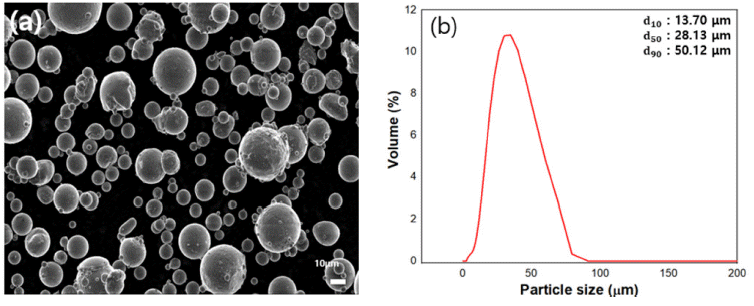
recoating tester designed by this research team. (a) the image of the recoating tester, (b), (c) Schematic illustration of recoating tester.
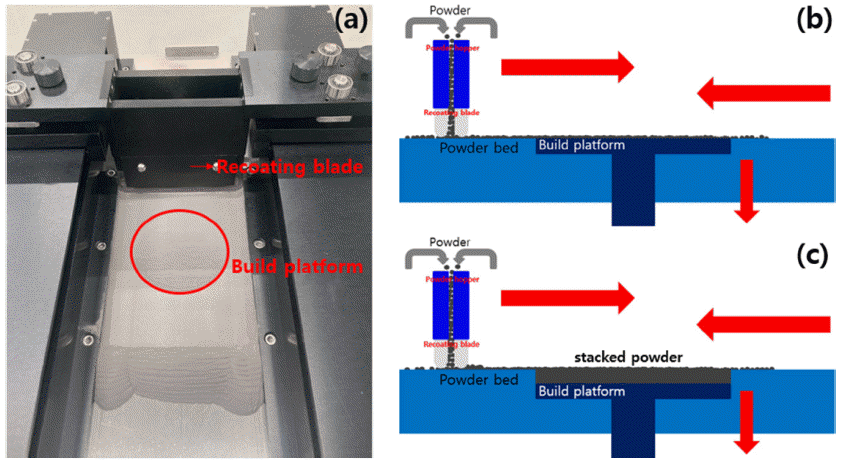
- 그림 5과 6은 표면 처리 전과 표면 처리 횟수 별(1회~4 회) X선 회절 패턴과 SEM image를 보여준다. X선 회절 분석(XRD)을 통하여 표면 처리에 의해 AlSi10Mg 분말의 상변형이 일어나지 않음을 확인하였다. MTCS 표면 처리 횟수가 증가할수록 상대적으로 큰 입자에 미세한 입자가 응집되어 있는 것을 SEM image를 통해 확인할 수 있다. 이는 그림 7에 나타난 표면 처리 과정에서 실란계 화합물 의 농도가 높을수록 silane 처리된 미세한 입자와 큰 입자 사이 간에 siloxane(Si-O-Si) 결합이 많아지는 이유로 생각 할 수 있다[22, 23].
- 그림 8은 표면 처리에 의해 형성된 결합의 형태를 확인 하기 위한 X선 광전자 분광 분석(XPS) 결과를 보여준다. 102.4 eV 근처의 peak는 Si-O-Si 결합에 해당하고, 103.5 eV 근처의 peak는 SiO2에 해당한다[31-33]. 표면 처리 후 Si-O-Si 결합과 SiO2가 증가함을 확인할 수 있다. Si-O-Si 결합의 증가는 실란이 알루미늄 표면에 결합한 OH와 반 응하여 Si-O-Si bridge를 형성하는 것으로 설명할 수 있다 (그림 7 및 식(1)). SiO2는 표면 처리 과정 중에 실란이 대 기 중의 산소와 반응하여 생성된다(식 (2))[21].
- MTCS 표면 처리된 AlSi10Mg 분말의 소수성을 입증하 기 위하여 pellet을 만들어 접촉각 측정을 하였고[27], 그 결과는 그림 9에 나타냈다. 표면 처리 전(a)의 경우는 친 수성이 매우 강하여 액체 방울이 표면에 닿는 즉시 흡수 하여 측정이 불가하였다. 표면 처리를 4회 진행한(b) 경우 는 124.6°C (5회 측정 후 평균값)로 우수한 소수성을 나타 냈다. 접촉각 측정 분석을 통하여 AlSi10Mg 분말이 MTCS 표면 처리 후 친수성에서 소수성으로 개질된 것을 확인하였다.
- 표 1은 AlSi10Mg 분말의 표면 처리 횟수 별 C arney flowmeter로 측정한 flow rate(a)와 본 연구팀에서 고안한 recoating tester에서 측정한 recoating density(b)의 결과를 보여준다. 표면 처리 전, 1회 및 2회 표면 처리 진행한 AlSi10Mg 분말의 경우는 흐름성이 좋지 않아 flow rate 측 정이 불가하였다. 표면 처리를 3회 할 때부터 flow rate 측 정이 가능하였으며, 표면 처리 횟수가 증가할수록 흐름성 이 좋아지는 것을 확인하였다.
- 그림 10은 recoating test 종료 후 촬영한 사진으로, 4회 표면 처리한 AlSi10Mg 분말(b)이 표면 처리 전 AlSi10Mg 분말(a)보다 퍼짐성이 좋은 것을 확인할 수 있다. 퍼짐성 을 수치화한 recoating density 값을 통하여 두 분말을 비 교하였다. 표 1(b)를 통하여 표면 처리 전과 비교하여 표 면 처리 4회 진행한 AlSi10Mg 분말이 recoating density가 약 37% 향상하였다. 분말의 표면 처리 후 큰 입자 표면에 미세 분말이 응집되어 유동 특성에 저하를 줄 수 있는 '위 성 분말'과 같은 형태의 미세조직이 그림 6에서 확인되었 지만, 소수성 처리로 인해 수분에 의한 영향이 감소하여 유동 특성이 향상됨을 확인하였다. 이는 기존 '위성 분말' 과 같은 형태의 미세 분말은 높은 비표면적으로 수분 흡 착도가 높고, 다른 분말과의 접촉이 더 용이하여 수분으로 인한 유동 특성 저하 효과가 더 크게 발생하는데[34], 소 수성 처리를 통해 수분에 의한 영향을 배제시키면 미세 분말의 존재 유무는 분말의 유동 특성에 큰 영향을 미치 지 않는 것을 확인하였다.
3. 결과 및 고찰
Schematic illustration of the surface treatment process according to the concentration of silane; (a) low silane concentration and (b) high silane concentration.

Analysis of contact angle between (a) untreated and (b) 4 times surface-treated AlSi10Mg powder.
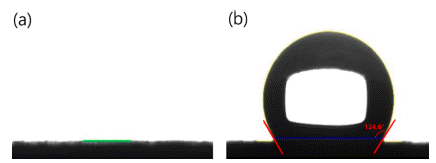
(a) Flow rate and (b) Recoating density results through (a) Carney flowmeter and (b) Recoating tester for number of surface-treated AlSi10Mg powder

|
- 본 연구에서는 AM 공정에 사용되는 AlSi10Mg 분말을 실란계 화합물을 통하여 표면 처리하였다. AlSi10Mg 분 말의 표면 처리 횟수 별 표면 분석과 흐름성 및 퍼짐성 분 석을 수행하였다. 또한 표면 처리를 통하여 AlSi10Mg 분 말이 친수성에서 소수성으로 개질되었음을 확인하기 위하 여 접촉각 측정 시험을 하였다.
- AlSi10Mg 분말의 흐름성은 표면 처리 횟수에 따라 다 른 결과를 얻었다. 표면 처리 전, 1회 및 2회 표면 처리한 AlSi10Mg 분말은 흐름성이 좋지 않아, Carney flowmeter 로 흐름성이 측정이 불가하였다. 표면 처리 3회 진행 시 flow rate가 31.7초, 4회 진행 시 27.4초로 표면 처리 횟수 가 증가할수록 흐름성이 좋아지는 것을 확인하였다. XPS 분석 결과에서 확인할 수 있듯이, 표면 처리 전과 비교하 여 표면 처리 4회 한 경우가 Si-O-Si(siloxane) 결합이 확 연히 증가함을 확인하였으며, 실란이 AlSi10Mg 분말 표 면의 OH와 반응하여 Si-O-Si(siloxane) bridge를 형성함으 로써 소수성으로 개질되었고, 이는 접촉각 측정 분석을 통 하여 확인하였다. 표면 처리 전 AlSi10Mg 분말과 4회 표 면 처리한 AlSi10Mg 분말의 퍼짐성 시험 결과는 표면 처 리한 AlSi10Mg 분말이 균일하게 build platform에 도포되 어 recoating density가 우수함을 나타낸다.
4. 결 론
-
Acknowledgements
- 이 연구는 2022년도 산업통상자원부 및 산업기술평가관 리원(KEIT) 연구비 지원에 의한 연구임(20001221, 2001 3122).
Acknowledgement
- 1. X. P. L i, K . M. O ’Donnell a nd T. B. S ercombe: A ddit. Manuf., 10 (2016) 10..
- 2. F. Taghavi, H. Saghafian and Y. H. K. Kharrazi: Mater. Des., 30 (2009) 1604..Article
- 3. K. Kempen, L. Thijs, J. van Humbeeck and J.-P. Kruth: Phys. Procedia., 39 (2012) 439..Article
- 4. F. Alghamdi and M. Haghshenas: SN. Appl. Sci., 1 (2019) 1..Article
- 5. P. Wei, Z. Wei, Z. Chen, J. Du, Y. He, J. Li and Y. Zhou: Appl. Surf. Sci., 408 (2017) 38..Article
- 6. W. Im, B. Lee, S. Park, Y. Yun and B. Kim: J. Powder Mater., 28 (2021) 120..Article
- 7. K. Yuasa, M. Tagami, M. Yonehara, T. T. Ikeshoji, K. Takeshita, H. Aoki and H. Kyogoku: Adv. Manuf. Technol., 115 (2021) 3919..Article
- 8. B. Song, S. Dong, B. Zhang, H. Liao and C. Coddet: Mater. Des., 35 (2012) 120..Article
- 9. C. Qiu, C. Panwisawas, M. Ward, H. C. Basoalto, J. W. Brooks and M. M. Attallah: Acta. Mater., 96 (2015) 72..Article
- 10. A. Strondl, O. Lyckfeldt, H. Brodin and U. Ackelid: JOM, 67 (2015) 549..Article
- 11. L. Cordova, M. Campos and T. Tinga: Euro PM2017, 1 (2017) 1..
- 12. C. Meier, R. Weissbach, J. Weinberg, W. A. Wall and A. J. Hart: J. Mater. Process. Technol., 266 (2019) 484..Article
- 13. B. Lee, D.-K. Kim, Y. I. Kim, D. H. Kim, Y. Son, K.-T. Park and T.-S. Kim: J. Powder Mater., 27 (2020) 509. .Article
- 14. Z. Snow, R. Martukanitz and S. Joshi: Addit. Manuf., 28 (2019) 78..Article
- 15. J.A. Muñiz-Lerma, A. Nommeots-Nomm, K. E. Waters and M. Brochu: Materials., 11 (2018) 2386..ArticlePubMedPMC
- 16. A. Strondl, O. Lyckfeldt, H. Brodin and U. Ackelid: JOM, 67 (2015) 549..Article
- 17. L. Cordova, T. Bor, M. de Smit, M. Campos and T. Tinga: Addit. Manuf., 32 (2020) 101082..Article
- 18. S. Touzé, M. Rauch and J. Y. Hascoët: Addit. Manuf., 36 (2020) 101462..Article
- 19. K. Riener, S. Oswald, M. Winkler and G. J. Leichtfried: Addit. Manuf., 39 (2021) 101896..Article
- 20. L. J. Jallo, M. Schoenitz, E. L. Dreizin, R. N. Dave and C. E. Johnson: Powder. Technol., 204 (2010) 63..Article
- 21. Y. I. Kim, D. K. Kim, D. Lee, T. S. Kim, Y. D. Kim and B. Lee: Appl. Surf. Sci., 556 (2021) 149645..Article
- 22. R. A. Sims, S. L. Harmer-Bassell and J. S. Quinton: Surf. Interface Anal., 50 (2018) 813..Article
- 23. Y. Chen, L. Jallo, M. A. S. Quintanilla and R. Dave: Colloids Surf, A Physicochem Eng Asp., 361 (2010) 66..Article
- 24. H. Liu and Y. Kang: Appl. Surf. Sci., 451 (2018) 223. .Article
- 25. T. Makowski, D. Kowalczyk, W. Fortuniak, D. Jeziorska, S. Brzezinski and A. Tracz: Cellulose., 21 (2014) 4659..Article
- 26. ASTM B964, Standard Test Methods for Flow Rate of Metal Powders Using the Carney Funnel..
- 27. ASTM D5946, Standard Test Method for Corona-Treated Polymer Films Using Water Contact Angle Measurements..
- 28. I. Flores-Vivian, V. Hejazi, M. I. Kozhukhova, M. Nosonovsky and K. Sobolev: ACS. Appl. Mater. Interfaces., 5 (2013) 13284..ArticlePubMed
- 29. E. Bormashenko, R. Pogreb, G. Whyman, Y. Bormashenko and M. Erlich: Appl. Phys. Lett., 90 (2007) 20..Article
- 30. M. Hamzah, Z. A. Talib, J. Liew, Y. Chyi and M. S. Alias: Int. J. Nanoelectron. Mater., 11 (2018) 3..
- 31. G. Beamson and D. Briggs: High resolution XPS of organic polymers, John Wiley & Sons, New Jersey (1992)..
- 32. C. D. Wagner, A. V. Naumkin, A. Kraut-Vass, J. W. Allison, C. J. Powell and J. R. Rumble Jr: NIST standard reference database 20, Version 3.4, (2003)..
- 33. A. R. Gonzalez-Elipe, J. P. Espinos, G. Munuera, J. Sanz and J. M. Serratosa: J. Phys. Chem., 92 (1988) 3471..Article
- 34. I. E. Anderson, E. M. H. White and R. Dehoff: J. Opin. Solid. State. Mater. Sci., 22.1 (2018) 8..Article
Figure & Data
References
Citations

- Residual Stress Analysis of Additive Manufactured A356.2 Aluminum Alloys using X-Ray Diffraction Methods
SangCheol Park, InYeong Kim, Young Il Kim, Dae-Kyeom Kim, Soong Ju Oh, Kee-Ahn Lee, Bin Lee
Korean Journal of Metals and Materials.2023; 61(7): 534. CrossRef




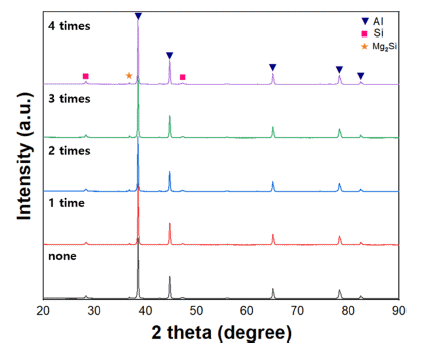


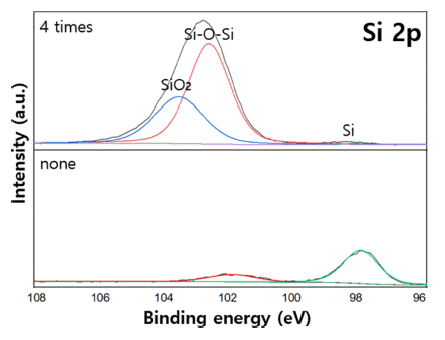

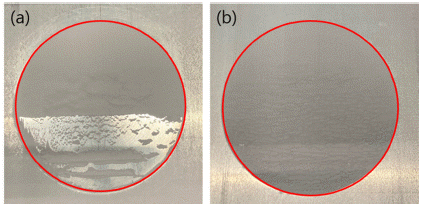
Fig. 1
Fig. 2
Fig. 3
Fig. 4
Fig. 5
Fig. 6
Fig. 7
Fig. 8
Fig. 9
Fig. 10
Table 1
TOP
 KPMI
KPMI

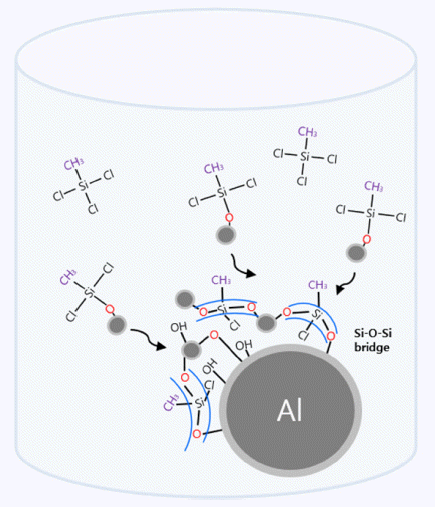





 ePub Link
ePub Link Cite this Article
Cite this Article










